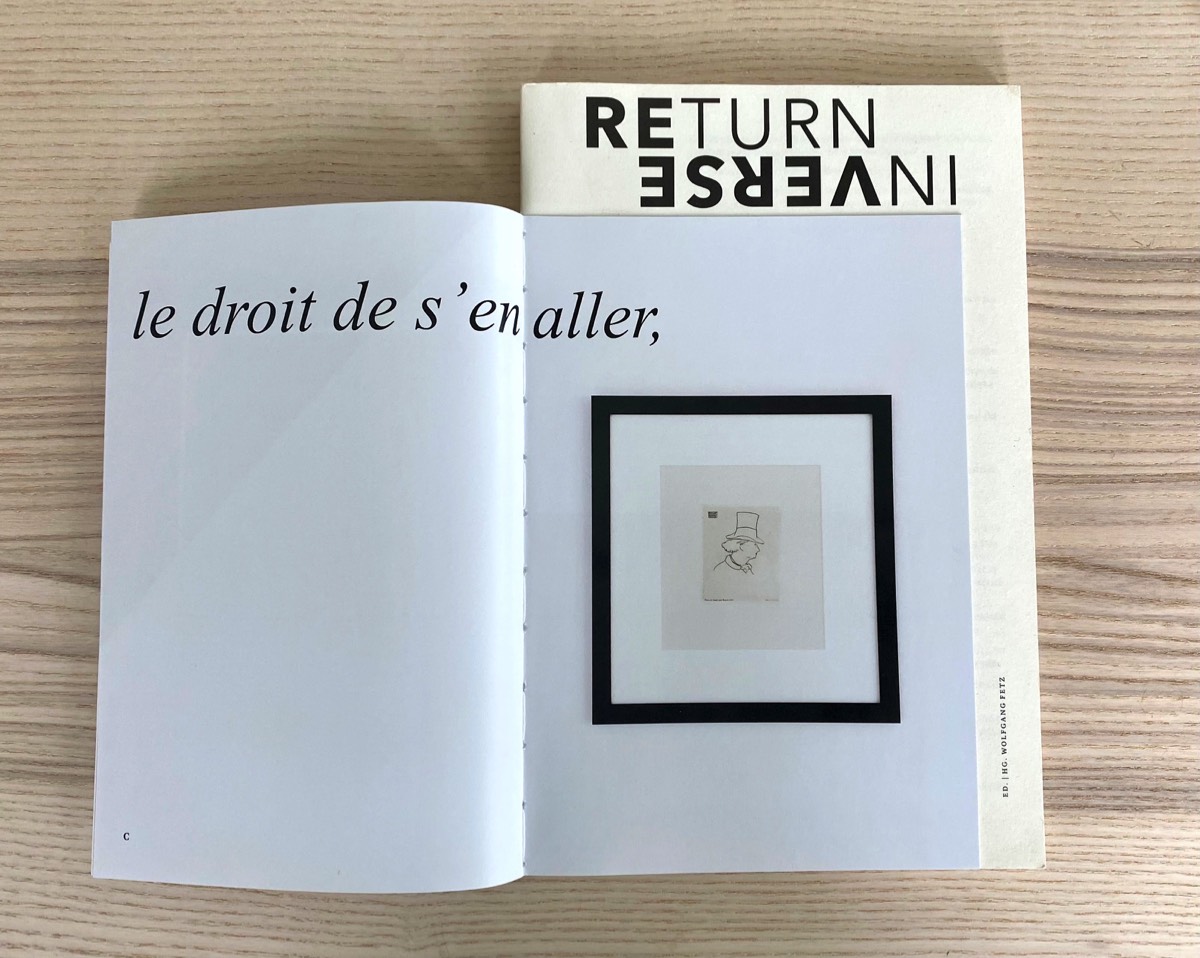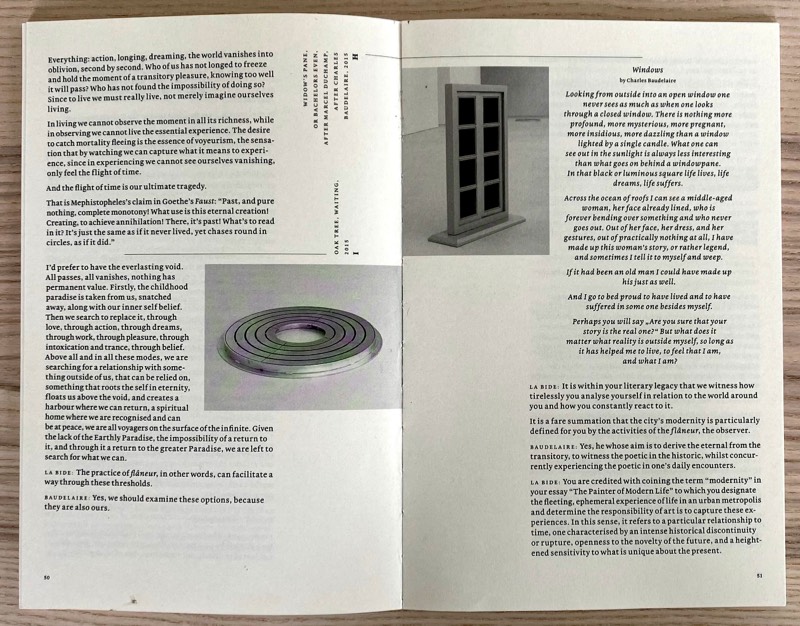
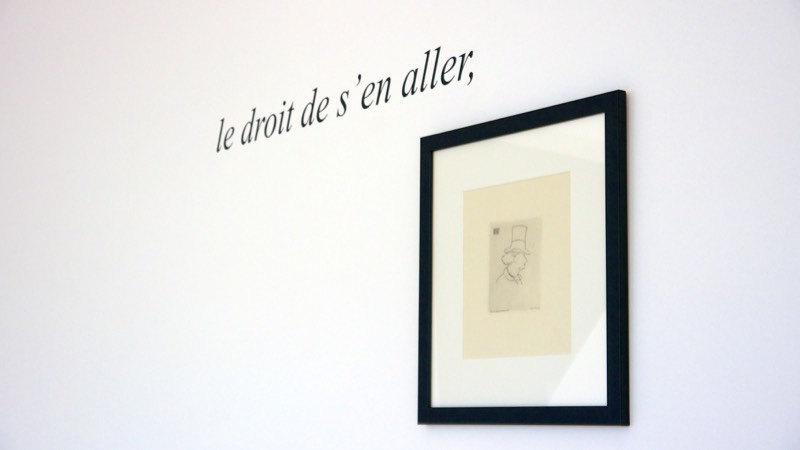
Walker and Walker, Return Inverse, Solo Exhibition at Magazin4, Bregenzer Kunstverein
4. Juni – 23. August 2015, www.magazin4.at
Bergmannstraße 6 | 6900 Bregenz mail@magazin4.at |
This body of work while diverse in form and medium has at its heart the undoing of things which appear to be stable because they have been presented as such over time. Undermining the stability of a binary structure by introducing a third element brings together positions of before and after into a state of becoming, instead of separating them, shattering the empirical continuation of time, or chronological succession. When a rupture occurs, or is introduced into these dichotomies, the overlooked, the ill defined or unresolved bring into question concepts of stability and open up circular narratives so that which appears clearly defined reforms in a constant state of flux, for that which is not is in a perpetual state of becoming.
Of specific interest is a misreading by Charles Baudelaire, a key figure in early Modernism, of Edger Allen Poe’s text ‘Mesmeric Revelation’, which served to both prompt Baudelaire’s political actions when he viewed the text as a factual account which supported Fourier’s particular brand of Socialist mysticism and later to withdraw from politics altogether when he realised that the text in question was in fact a work of fiction.
4. Juni – 23. August 2015, www.magazin4.at
Bergmannstraße 6 | 6900 Bregenz mail@magazin4.at |
This body of work while diverse in form and medium has at its heart the undoing of things which appear to be stable because they have been presented as such over time. Undermining the stability of a binary structure by introducing a third element brings together positions of before and after into a state of becoming, instead of separating them, shattering the empirical continuation of time, or chronological succession. When a rupture occurs, or is introduced into these dichotomies, the overlooked, the ill defined or unresolved bring into question concepts of stability and open up circular narratives so that which appears clearly defined reforms in a constant state of flux, for that which is not is in a perpetual state of becoming.
Of specific interest is a misreading by Charles Baudelaire, a key figure in early Modernism, of Edger Allen Poe’s text ‘Mesmeric Revelation’, which served to both prompt Baudelaire’s political actions when he viewed the text as a factual account which supported Fourier’s particular brand of Socialist mysticism and later to withdraw from politics altogether when he realised that the text in question was in fact a work of fiction.
Baudelaire came to view his earlier political beliefs and actions as naive to the extent that he would come to deny any political involvement in the revolution of 1848.This was not out of any fear of retribution but quite simply out of fear of being considered a naive, a dupe. In time Baudelaire would once again revisit his revolutionary ambitions, as can be witnessed in the reassertion of his democratic ideals in his later notes relating to the ‘Argument du livre sur la Belgique’ where he would return to the matter of democracy once again. However he became somewhat reluctant to speak of such matters even to himself, except in the form of verse. In affect he would erase his own personal history.
Baudelaire advocated for the right to disappear to be added to the list of universal human rights. One of the first works on entering the exhibition is a quote in vinyl text on a wall 'Le droit de s'en aller / the right to go away', accompanied by an original print by Édouard Manet of Charles Baudelaire, a study for a later painting ‘Music in the Tuileries’. Hung low on the back wall of the gallery, a single scrolling white LED sign bears the words “Take cognisance of the fact that something is lost at the very moment in which it is found”. The medium is central to the articulation and sentiment of the work, as the words scroll into view passing in front of the viewer, they are in essence themselves lost and found as memory comes into play.
Baudelaire advocated for the right to disappear to be added to the list of universal human rights. One of the first works on entering the exhibition is a quote in vinyl text on a wall 'Le droit de s'en aller / the right to go away', accompanied by an original print by Édouard Manet of Charles Baudelaire, a study for a later painting ‘Music in the Tuileries’. Hung low on the back wall of the gallery, a single scrolling white LED sign bears the words “Take cognisance of the fact that something is lost at the very moment in which it is found”. The medium is central to the articulation and sentiment of the work, as the words scroll into view passing in front of the viewer, they are in essence themselves lost and found as memory comes into play.
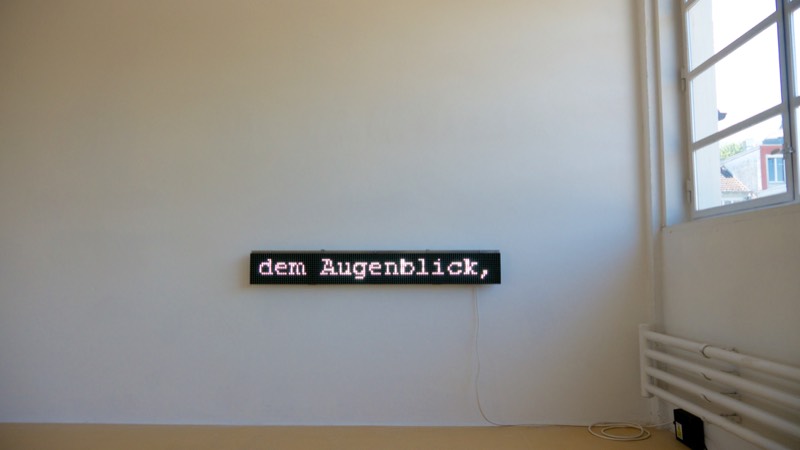
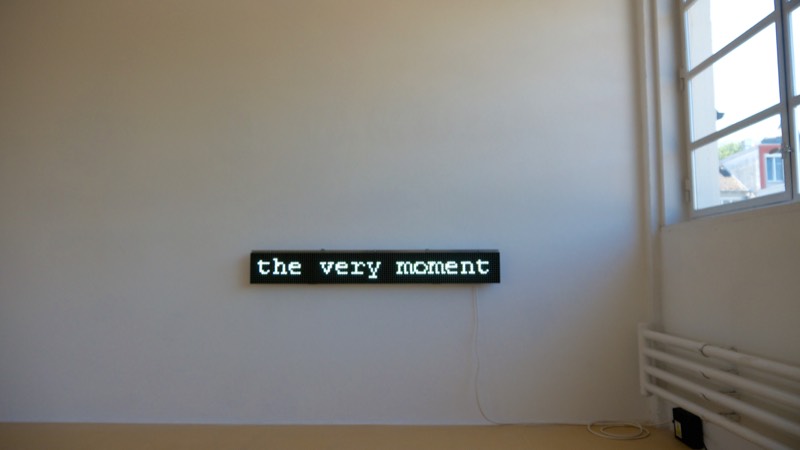
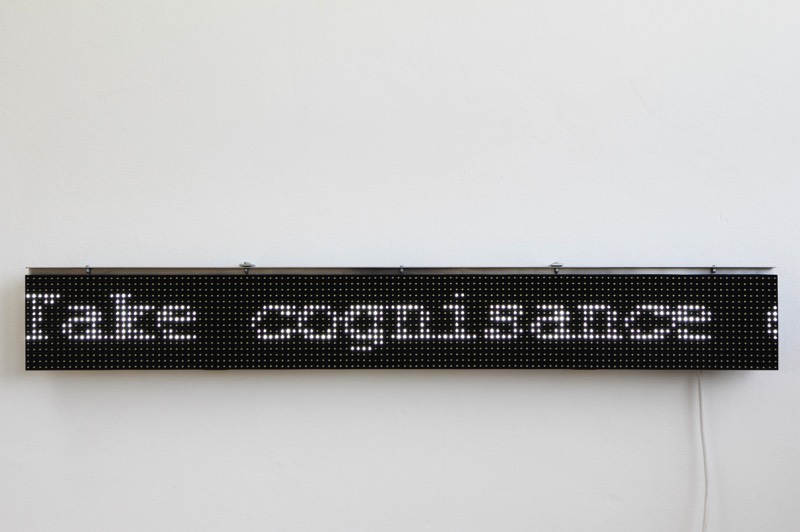
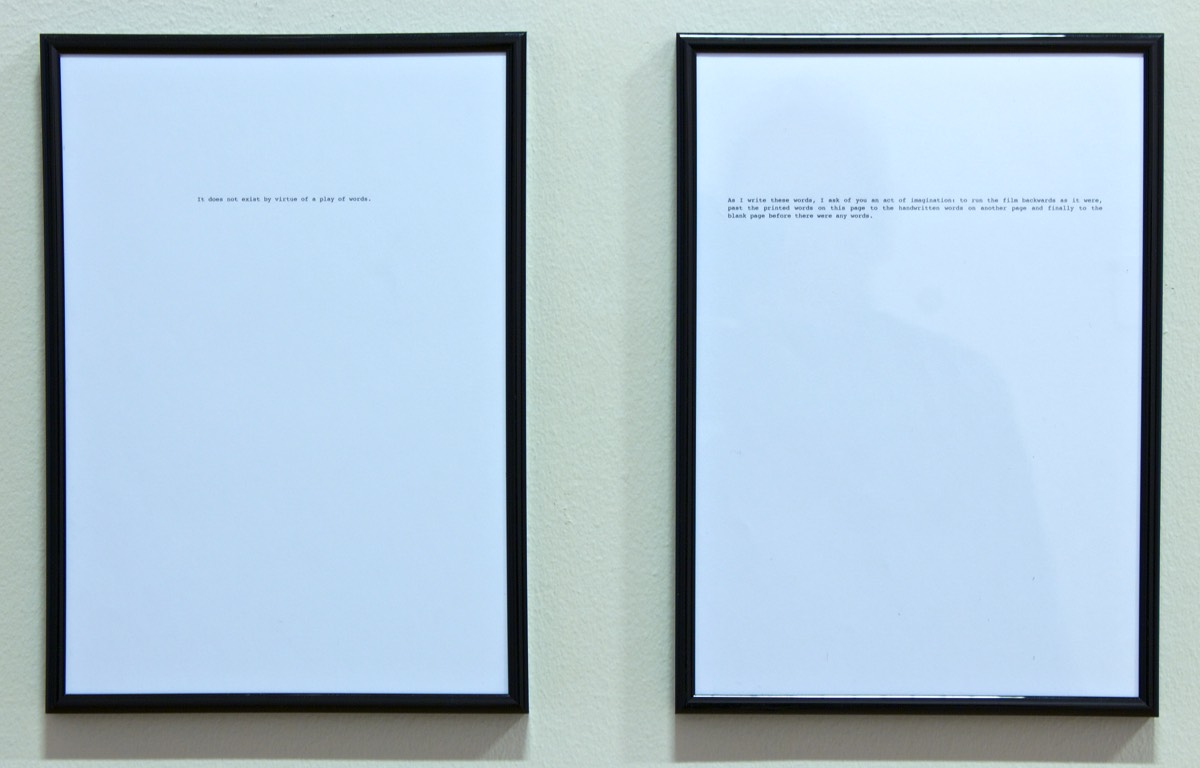
‘Play, Acts I and II’ is a printed text diptych which declares "It does not exist by virtue of a play of words" which addresses the ability to rewrite one’s past, we possess a willingness to forget, then a desire to remember. At the heart of this proposition is the impossibility to render something immaterial. The accompanying work asks of the viewer to imagine a blank page by retracing an authors steps “As I write these words, I ask of you an act of imagination:to run the film backwards as it were, past the printed words on this page to the handwritten words on another page and finally to the blank page before there were any words.”
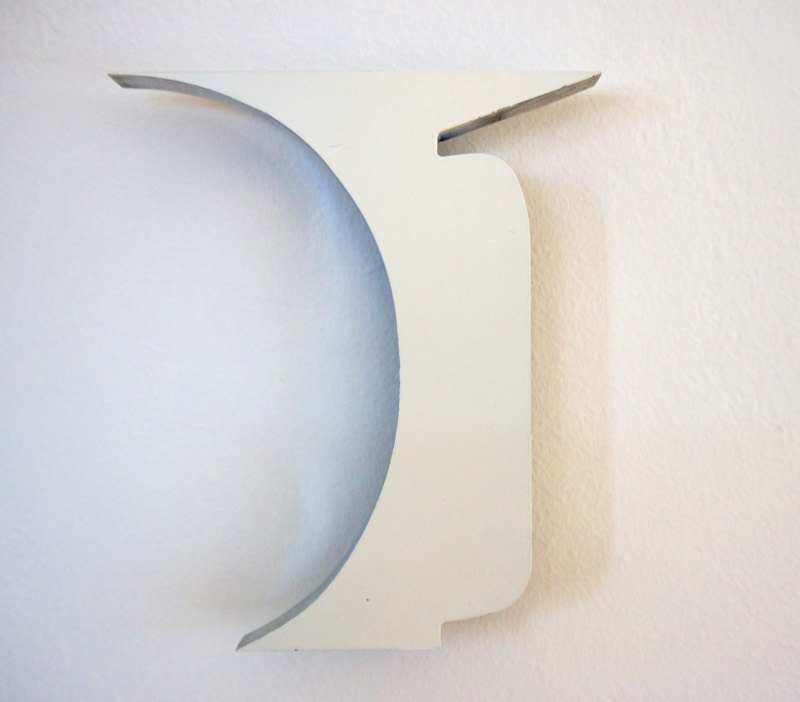
There are unique spaces that couple each letter in a word. Despite the fact that these negative spaces are encountered frequently, they remain unfamiliar and enigmatic. Making solid the empty space between the letters of the word ‘or, in what is termed kerning in typographical language, a small sculpture, ‘In-between O and R’ is articulated by the negative space between the letters of the grammatical conjunction. Rendering concrete this shape opens up a space which undermines the polarity of the word itself, becoming a space before a thought or action.
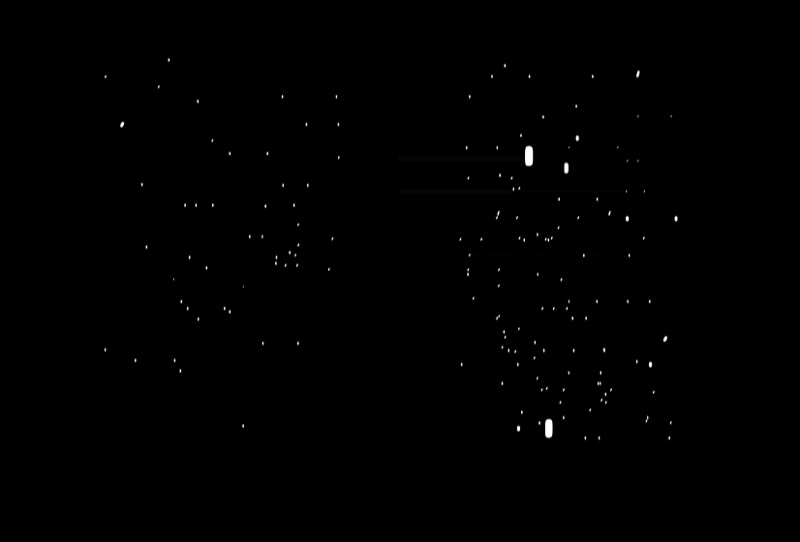
‘The throw of the dice will never abolish chance’ is a print made from Stéphane Mallarmé’s poem of the same name. This poem was published posthumously in broadsheet format using copious notes by Mallarmé of how it was to be laid out using various different fonts and sizes. Paul Valery speaks of Mallarmé as having raised a printed page to the power of the midnight sky, of a text of clarity and enigma, both tragic and indifferent. Through layering the sheets and inking out the text of the poems with the exception of where the letter ‘o’ appears, the work appears as a constellation of stars while also bears reference to the counting system of dots used on a dice.
Further undermining the binary of a fixed state, two incandescent light bulbs hanging together from the gallery ceiling ‘Communion’ are programmed to concurrently fade up and down over a period of 6 minutes, in communion with one another as if breathing.
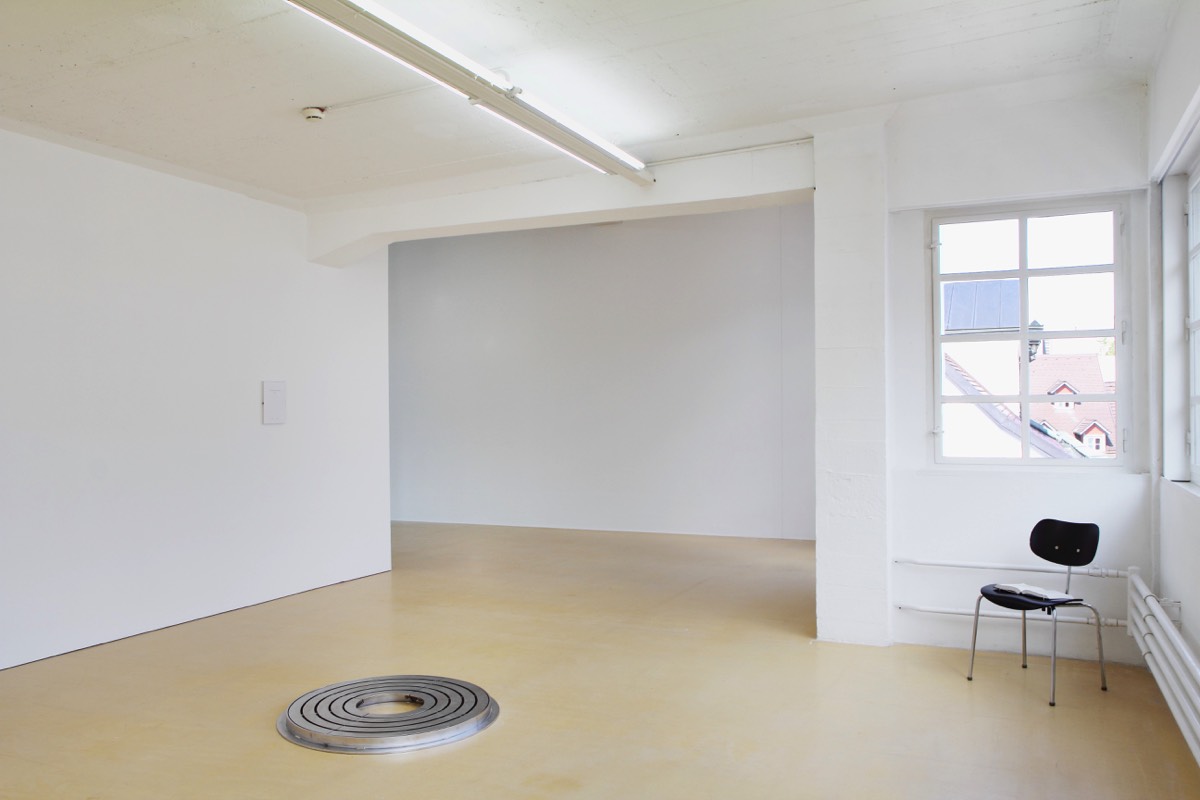
On a chair in a corner of the gallery a book lies open that consists of a rebinding of Charles Baudelaire's 'The Evil Flower' placing two of his poems 'First Light' and 'Last Light’ alongside each other, creating a small internal circular narrative echoing dawn to dusk, day to night, defying closure within the larger body of work.
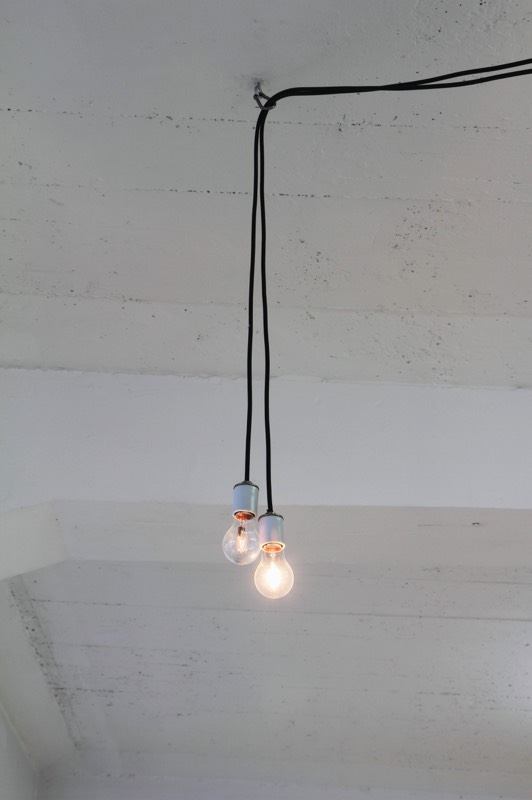
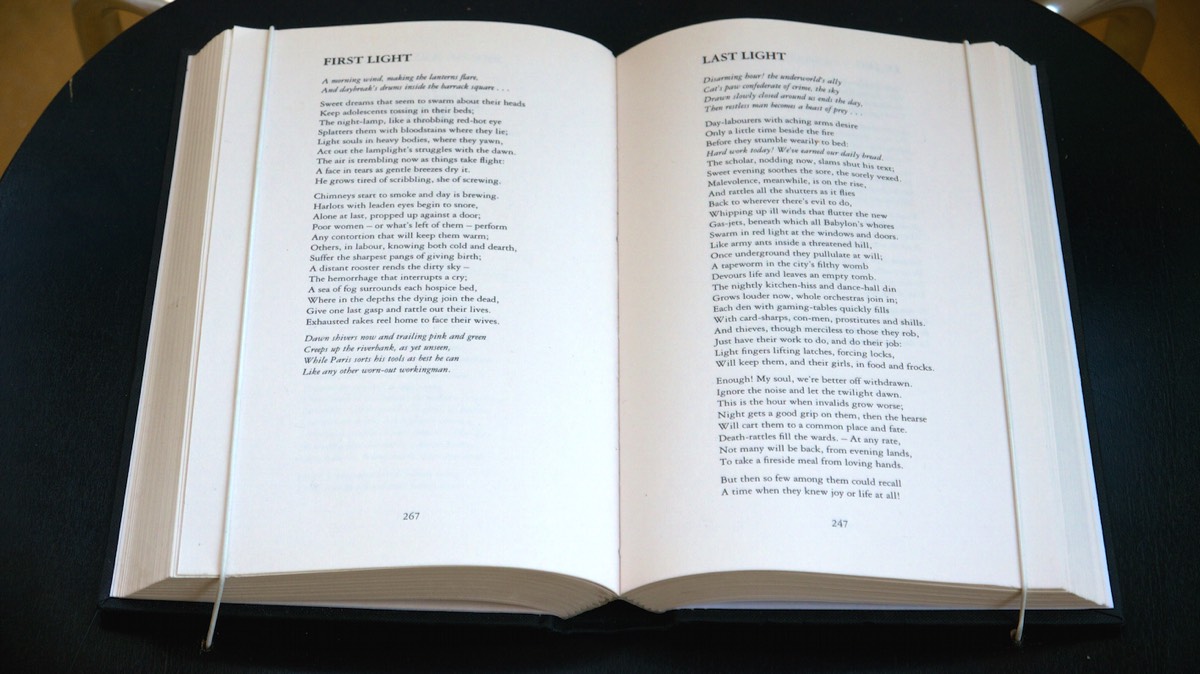
‘Widows Pain, after Marcel Duchamp, after Charles Baudelaire’ is a reworking of Duchamp’s “Fresh Widow” and makes reference to Baudelaire’s prose poem titled ‘Window’ in which he celebrates the opacity of these links between public and private, that simultaneously pierce and reinforce the barriers between us and the outside world. The reflection in the black glass of the window throws the gaze of the viewer back upon him or herself, while simultaneously articulates that which lies beyond, a site of contemplation, out of view.
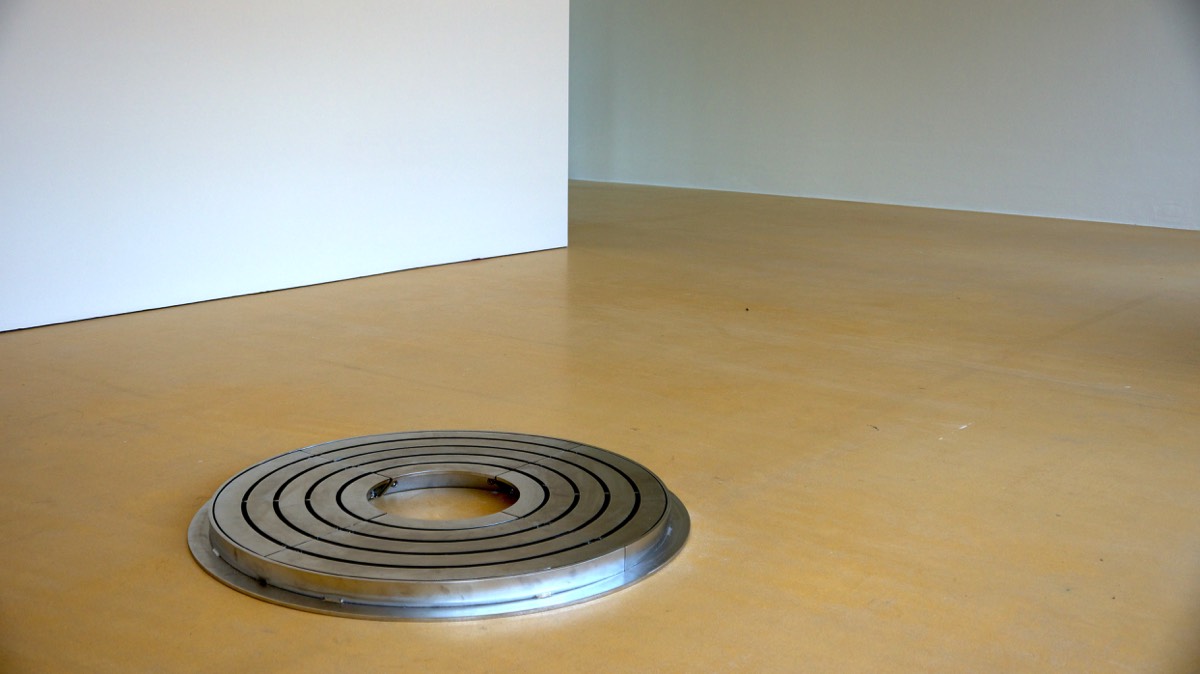
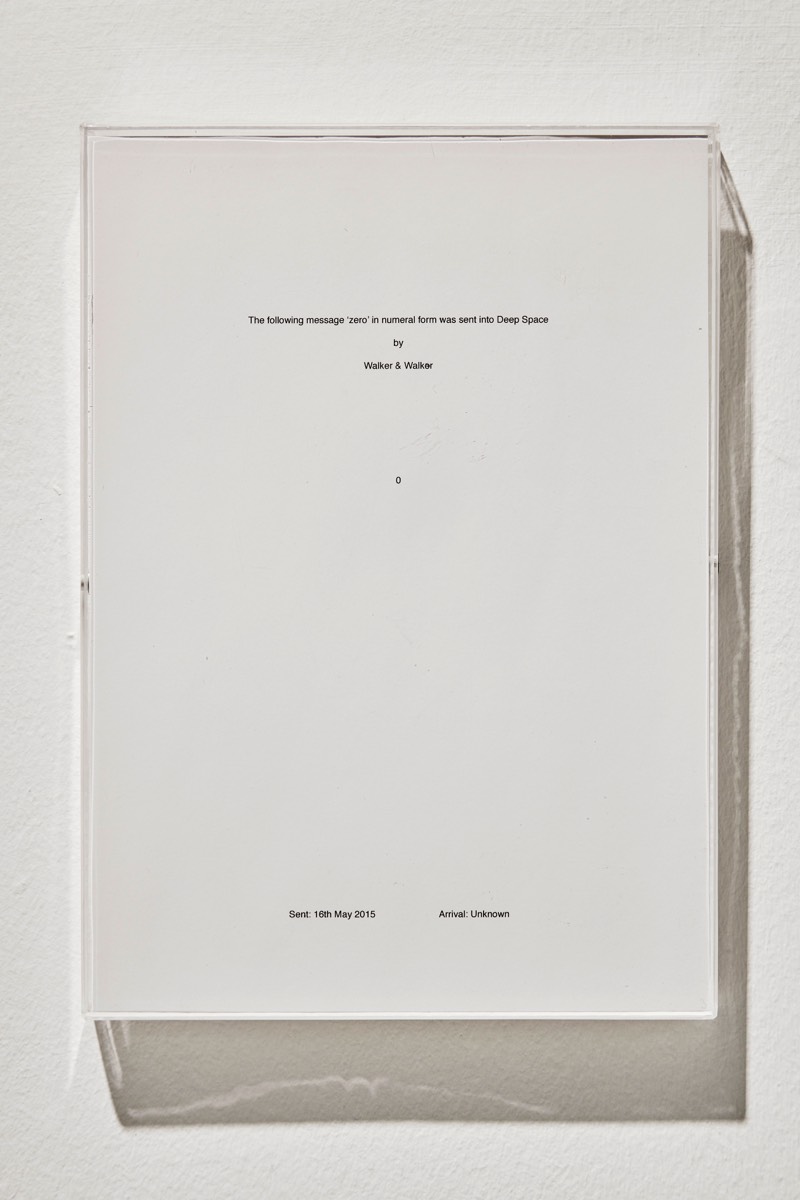
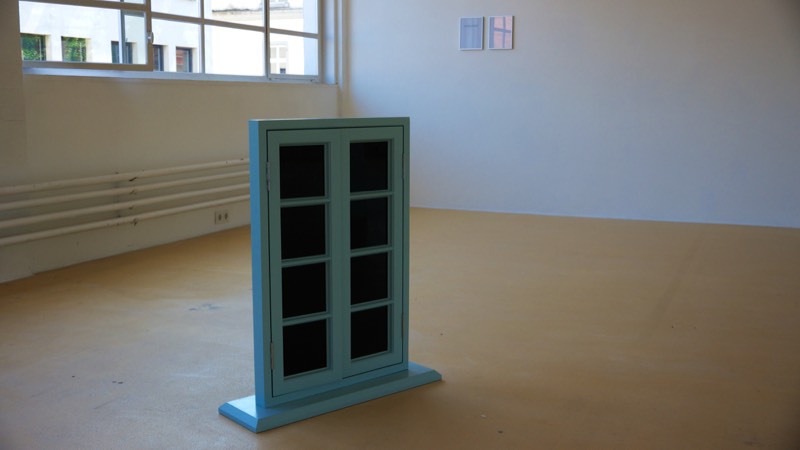
A sculpture on the floor ‘Oak tree, waiting’ consists of five concentric circles which form a street grating for a tree. Picking up on the motif of zero which addresses the notion of absence, loss, or the void, this object is in essence is designed in time to be obsolete; as the tree outgrows its designated circle, each defined space is removed in turn.
‘Void' consists of the numeral zero sent into deep space using radio technology. Its arrival unknown, a void within the void of space. The number zero is implicitly linked to the protocol of launching a rocket into space with the use of the countdown system. Zero is a symbol of nothing, the absence of any quantity, in the Jewish Kabbalah zero represents all that is boundless and beyond human control, the form resembles a circles having neither beginning or end, its elliptical shape represents both rise and fall.
‘Void' consists of the numeral zero sent into deep space using radio technology. Its arrival unknown, a void within the void of space. The number zero is implicitly linked to the protocol of launching a rocket into space with the use of the countdown system. Zero is a symbol of nothing, the absence of any quantity, in the Jewish Kabbalah zero represents all that is boundless and beyond human control, the form resembles a circles having neither beginning or end, its elliptical shape represents both rise and fall.
‘Proposition adhered to’ consists of fixing a postcard of a Sigmar Polke painting to the gallery wall, which bears the text “Hohere Wesen befahlen : rechte obere Ecke schwarz malen! / Higher beings commanded: paint upper right hand corner black!”. A black area was painted onto the gallery wall, extending the black and white geometrical composition of the postcard while also physically adhering to the proposition.
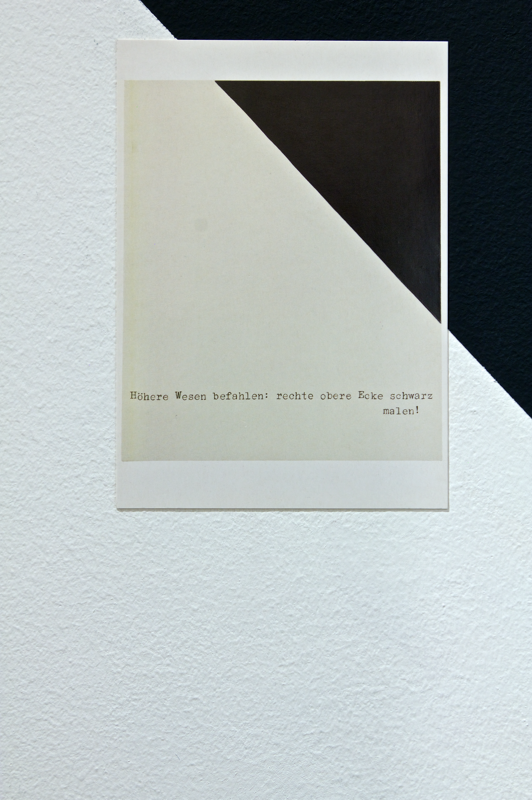
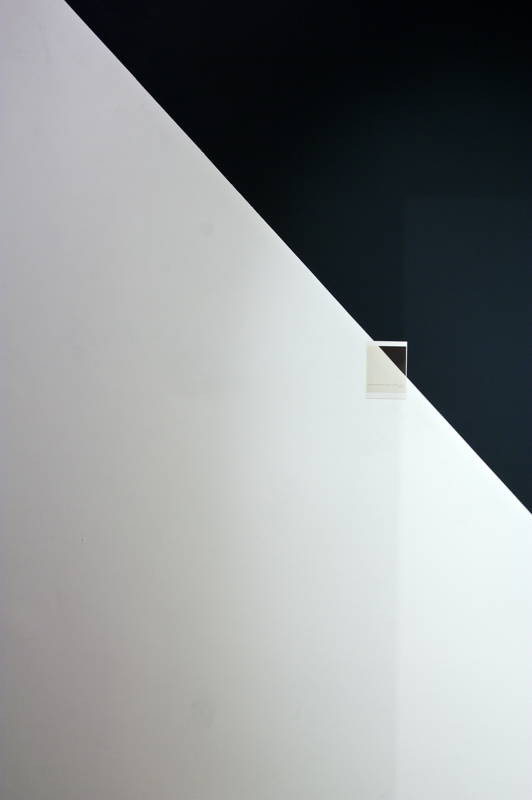
According to Georges Bataille there is a blind spot in humans understanding corresponding to the structure of the eye, which explains why our theoretical understanding is dependent on visible models. A work ‘Dusk’ consists of two threads, one black and one white running from floor to ceiling. Placed in the space so that there will come a point at dusk, where through the loss of light, one can on longer distinguish one from the other. That which is in opposition to each other, black and white, in time becomes indiscernible. Defying closure, night takes away the very of proof of its existence, in time one will witness nothing in the darkness. Indeed night can take away the proof that we exist, at least to each other.
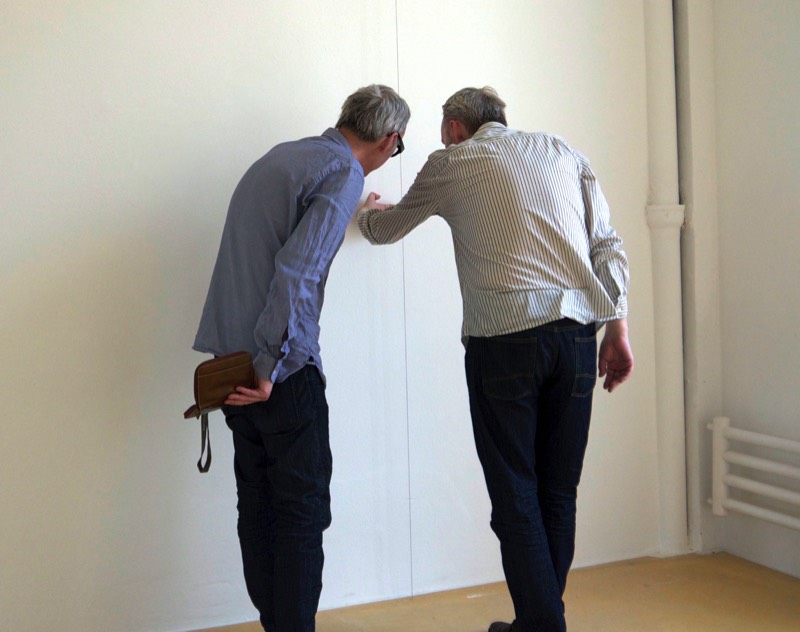
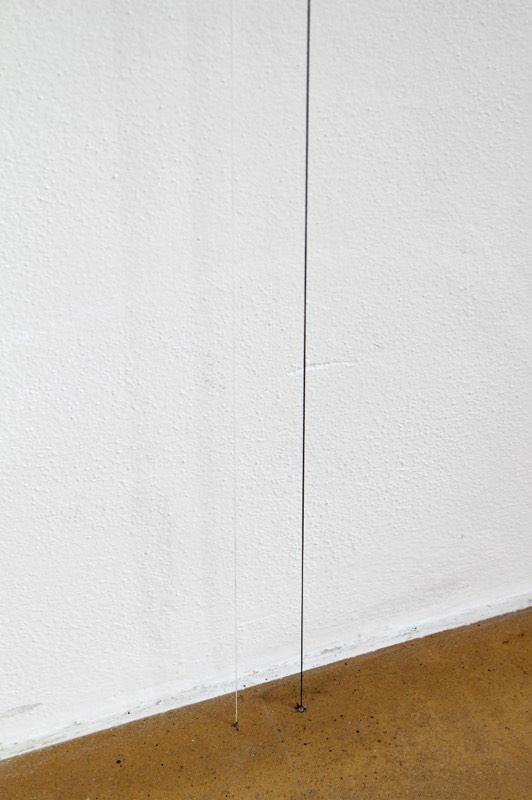
An accompanying artist’s book/catalogue 'Return Inverse' was published following the exhibition. It consists of a play or script of a hypothetical interview with Charles Baudelaire which addresses his personal development as a poet and essayist and how this correlates with his ardent political views. Adopting a tripartite approach to language, through the formal language of the play itself, the directorial instructions of the director and the informal social exchange between the respective protagonists as they shape the play, including moments of idle chatter. The play begins in the presence of the Manet painting ‘Music in the Tuileries’. A painting of a scene in a park, Baudelaire is one of the depicted people in conversation with Gautier. Within the intrigue of what is left out, the absence of the musicians creates a psychological theatrical space wherein Walker and Walker’s play performs.
